As the editor-at-large of Merriam-Webster, Peter Sokolowski contributes to the dictionary’s print and online content, which, in addition to word definitions, includes podcasts, videos, and blogs. In August Sokolowski and his fellow editors rolled out Time Traveler, a tool that organizes words according to when they were first used in English. He recently discussed Merriam-Webster’s newest features, the changing ways in which people use the dictionary, and the Word of the Year, feminism, which the editors announced today.
How does Time Traveler work? How does it affect the way we think about language?
With Time Traveler, by organizing [words] a different way—that is, rather than alphabetically, chronologically—you get a three-dimensional experience with the dictionary. I do think it’s profound to think of language chronologically. Alphabetically, the ordering is arbitrary. Chronologically, it’s not. Time Traveler shows layers of cultures as they are expressed in the language when they come into the language. English is such a peculiar language in this way. French, for example, is almost entirely derived from Latin. The French Academy founded the language with an ethos of contraction. But English is a mongrel language, with an ethos of expansion. This ethos of expansion has a political component, too. England is establishing colonies all over the world. So, due to exploration, India is a very rich source of words. We first put dates into the dictionary in 1983, with the release of the Collegiate ninth edition. Dictionary entries have always been organized in chronological order: The first sense was always the oldest sense, and the last definition was, chronologically, the most recent. The thing is, that’s a little counterintuitive. By adding dates to entries, we felt we were giving more specific info about when each word entered the language. And now, collectively, because of organizing principles of the Internet, we can connect these words by date. Time Traveler allows imagination to combine with history. It gives a poetic sense of what the dictionary really is—a new and different kind of way of organizing our language.
How might people use Time Traveler?
Here’s one banal example: There’s a wonderful linguist, Ben Schmidt, who rates the language of Downton Abbey, illustrating how many of the words [used on the show are] anachronistic. Contact, for example, was not a verb in 1912. Another example is when Lord Grantham says “You’ll have to step on it” in 1912. You just have to think: This guy had probably never driven a car, so why would he use this very slangy idiom? The idea of speeding didn’t even exist yet.
What does the online version of the dictionary do that print can’t, and vice versa?
When Samuel Johnson, in 1755, wrote his dictionary, a woman came up to him and said, “I’m so pleased that you have omitted the naughty words.” “Madam,” Johnson replied, “I find that you have been looking them up.” Before the dictionary went online, the people who wrote dictionaries never knew which words were looked up. We’re learning enormous amounts about what drives people to a dictionary and what people are looking for from a dictionary. The dictionary is not just used for novel and arcane words—it’s mostly used for words that are a little abstract. There are cyclical things: Love is always at the top of the list in February. There are back-to-school terms: cultures, diversity, plagiarism. And there are the evergreens: integrity, ubiquitous, affect versus effect. Whatever sends us to the dictionary is a private moment. Looking up a word in the dictionary is an intimate act, something between ourselves and our language. The dictionary is this little intermediary—it orchestrates and organizes that relationship. That’s what it’s for. When people are looking up love in February, they’re not looking for spelling—they’re looking for philosophy.
In 1996 we started offering the dictionary online for free, and in 1997 we started following word trends. What had become a static list became dynamic, and we could see what people were looking up in real time. So, for example, in 1997, Princess Di dies; paparazzi is a very natural word to look up. During 9/11, first there were concrete words—rubber, triage—then more philosophical words, such as surreal, succumb, spontaneous. Surreal is always looked up after tragedies. In 2009 I started putting these things on Twitter. We’re often criticized for being political, but we’re responding to the data. We’re good at reading data—we’re not good at reading minds.
Why keep the print edition around at all?
The dictionary we search online is a different experience than the book. The print dictionary is a great piece of technology: It’s really fast, and it really works. And the print way of organizing information means that you always see certain things together. That’s no longer really the case online. The big thing online is, there’s space. Almost every decision for print dictionaries had to be made by the tyranny of space. We are no longer bound by that. What had been tyranny of lack of space is now tyranny of too much space. I always tell people, keep your old dictionaries. The old ones have different information that might be interesting. There is no spreadsheet for when definitions change. You just have to take the book down and look it up and see. For the first time last week, I looked up the word dictionary in Webster’s unabridged second edition, from 1934. I was fascinated. It’s an article on the history of the dictionary. That’s the kind of material that would be dropped in print today, but that’s some of the reason you go to a dictionary. We’re trying to answer those questions that might be asked when you’re looking up a word in the dictionary: Does a Cobb salad have chicken or turkey? The online dictionary is a contemporary magazine of language—let’s be the one-stop word website.
How do you choose the Word of the Year?
The Word of the Year goes back to 2003, and it was always based on the data. However, there’s an asterisk. If we went by raw tonnage, we would have boring words, abstract words that adults feel responsible for. We’re looking for what words spiked this year, not last year. That tells us something about the language today. We also look at what words were looked up in far greater numbers this year than last year, which we call year-over-year numbers. We look at that figure, and then we see a list of words that are typically much more apposite to the year we just experienced. In other words, it tells us something about this year that we’ve lived through, as opposed to words that tell us something about the general curiosity about the English language.
What do you think 2017’s Word of the Year tells us about the world in this moment?
The word of the year is feminism, which is pretty striking given the news. On the one hand, you might say that this is a fairly common word, one that is not really the subject of the news. In point of fact, this is a word that has been rising for the past several years to the point that it’s almost in our top twenty of overall lookups in the history of our website. We saw a 70 percent increase in lookups in 2017, and then we saw these spikes throughout this year. In January we saw a spike after the Women’s March on Washington and the other marches all over the country and the world, which got a huge amount of attention and were historic in various ways. The word feminism was used in particular regarding questions of whether or not the March was feminist or what kind of feminism the organizers and the attendees represented.
In February we saw another huge spike—and this one is in some ways more pointed and more dictionary-oriented—when Kellyanne Conway gave an onstage interview at the Conservative Political Action Conference and said she didn’t consider herself a feminist in the “classic sense.” She explained that she thinks being feminist, in her words, seems to be very “anti-male” and very “pro-abortion.” She was using the word in a very specific way, and that kind of specific use sends people to the dictionary for the definition, because the definition of the word itself was put into question, was itself the subject of the news story. Which is also true with the word fact, when Kellyanne Conway, also in the earlier part of the year, used that term “alternative facts.”
Later in the year we saw two entertainment reasons for the word’s popularity: The Handmaid’s Tale, the Hulu TV adaptation of the Margaret Atwood novel, which got not only a huge amount of positive reviews, but also a huge amount of think pieces using that series as a point of departure and a contemporaneous cultural critique; and the film Wonder Woman, starring Gal Gadot in the title role, who was viewed as a feminist character in a feminist film with a female director, Patty Jenkins.
And recently of course, subsequent to the accusations made against Harvey Weinstein and a long list of others, the word feminist has been in the news a lot. Just today I happened to click on the New York Times story about Lena Dunham and her warnings to the Clinton campaign about being too close to Harvey Weinstein. The word feminist was not only used several times in the article, but there’s also a quote from Dunham where she says she wears underwear that has the word feminist on it. That’s not necessarily the kind of use that will send people to the dictionary, but it shows you that this word is part of the national conversation—to the extent that there is such a thing as a national conversation. I think it’s sometimes too facile to say that there’s a national conversation; I sometimes think that’s shorthand for people who don’t want to be very specific about context. However, if there is such a thing as a national conversation—and there surely is right now regarding, for example, sexual harassment in the workplace and presidential politics—Merriam-Webster has a front-row seat because we see the words that are being looked up as the stories progress. That’s a fascinating thing that I’ve been watching for years and that we present on our home page and on Twitter, in a feature we call Trend Watch, which is simply the words that are most looked up at a given moment. And that word right now is feminism.
Have you recently changed or tweaked the definition of feminism, or has it been consistent for the past several years?
The first English language dictionary to ever include this word was Noah Webster’s dictionary in 1841, which was the last time Webster revised the dictionary before he died. He added the word feminism with the definition, “the qualities of females.” Clearly what he meant was femininity or femaleness; there was no political connotation to the word. This was a word that appeared to him somewhere, but we can’t actually find what he was looking at; we don’t know where he got it. In the 1864 edition, after Webster died and the Merriams had taken over, they dropped the word entirely because it was not used very frequently. It was not included in the next edition, published in 1890. And then in 1909 it was added with two definitions—one, “feminine character or characteristics,” and two, the medical definition, “female characteristics present in males.” So this medical definition precedes the political one. Finally, in the famous unabridged second edition of Webster’s from 1934, the political sense was added: “the theory of those who advocate such legal and social changes as will establish political, economic, and social equality of the sexes.” That’s pretty much the way we define it today. The important word here is equality—equality of the sexes could almost stand as the definition. It’s interesting that we’ve dropped both the medical sense and the femininity sense, which is archaic at this point. The political sense we associate with the word basically begins around 1895, and that’s exactly when the suffragette movement was beginning. So the term feminism is more closely associated in political terms to the fight to get the vote, which makes perfect sense.
Also notable is that it’s a very modern word for English—we have a lot of words that are over a thousand years old, and this one is just over a hundred. That’s a very short time in the history of the English language. It seems to me that feminism is a word that has shifted over time. I think it was taken to be more aggressive in the past and is maybe taken much more positively today. Just like a lot of ideas, it’s a word that has shifted in meaning as the times have changed. That’s as it should be.
What were the runners-up for Word of the Year?
The nine runners-up tend to represent individual spikes that were very striking. The first one is complicit. That came from Ivanka Trump who said in an interview with Gayle King, “I don’t know what it means to be complicit.” When you are a newsmaker and you say “I don’t know what x means” on live television, you better believe it sends people to the dictionary. What sends people to the dictionary even more is when people are having a lot of fun with it, and Saturday Night Live made a skit based on that interview, which kept it going. So that word really had a lot of hits, and it’s a fascinating word. The word is two parts, com and plicare or plek—the com means “together” or “with” in Latin, and the plek means “fold,” so it means “folded together.” It’s the same etymon of two other words that are much more common, complicated and complex.
The next one is the word recuse. Those lookups are all attached to Jeff Sessions. There was a recusal to look into Hillary Clinton; there was a recusal to look into the Trump campaign; there was a recusal involving the Russians. The word recused kept bobbing up and it was always connected to Jeff Sessions. Recused is a classic legal term, and he’s the attorney general, so it makes perfect sense that a legal term would be associated with him.
The next word is one that we don’t associate with a particular story; it just simply went way up in lookups, and we’re not really sure why. It’s the word empathy. Part of it was attached to the #MeToo campaign, with people talking about empathy towards women. And of course there was a lot of criticism of the Republican Party, Trump in particular, for lacking empathy. So this word is being used in both positive and negative ways. It was also in the news January when Asghar Farhadi, the Iranian film director who won two Oscars for Best Foreign Language Film, said he wouldn’t come to the Oscars because of Trump’s proposed travel ban, and that he was making a call for empathy between us and others, “an empathy which we need today more than ever.” And then in July at the Republican National Convention, Paul Ryan was highly quoted using the word when he said, “Real social progress is always a widening circle of concern and protection. It’s respect and empathy overtaking blindness and indifference.” When newsmakers utter the word, it does tend to send people to the dictionary. But we can’t say any one of those stories is the simple reason it makes our list.
Here’s the one that’s interesting from a percentage point of view: dotard. It’s a very unusual word. It was the word used by the Korean Central News Agency as a translation of Kim Jong Un’s statement where he referred to Donald Trump as a “mentally deranged U.S. dotard.” Because it’s such an unusual word—it’s essentially an obsolete word—we saw a 35,000 percent increase in lookups from 2016. We have 250,000 pages of words in the dictionary and some of those pages are looked up a thousand times an hour, others only a few times a year. Dotard was a word that was probably never looked up last year. It comes from the same word as dotage, which means a state or period of senile decay. So dotard originally meant imbecile, or stupid person, but now it just means an older person who is losing mental acuity. And this is a great thing about what the dictionary does—it gives a vocabulary lesson to the country when words like this are in the news. It’s also notable that this word is in the news probably because the Korean translators must be using very old bilingual dictionaries, because no contemporary speaker of English would use this word.
The next word is a science word from the solar eclipse, syzygy, which means the nearly straight-line configuration of three celestial bodies such as the sun, moon, and earth during a solar or lunar eclipse. The solar eclipse was an international story, and it cut straight through the United States and was a big teaching moment for a lot of people.
The next word is one that is looked up for pronunciation. We know that some words are looked up for their phonetics; typically they’re foreign words like schadenfreude or niche. This year the word was gyro. This was because of one simple event—Jimmy Fallon did a sketch on The Tonight Show with Luke Bryan, the country singer, and it showed them out on the streets of New York City getting a gyro. They ask each other, “How do you pronounce this?” and they turned it into this big musical number. It turns out there are three pronunciations for the word.
Federalism spiked because of the Congressional debate about the Affordable Care Act. Lindsey Graham said, “Here’s the choice for America: socialism or federalism when it comes to your health care.” What’s interesting to me about this is that socialism, as well as fascism and capitalism, are some of the most looked-up words in the dictionary. The problem with federalism, is that in America, we very unusually call our national government the federal government; however, the word federalism refers very explicitly to state rights. So the word itself is very confusing. You can see why it would send people to the dictionary.
The next two words are very simple, news-related words: hurricane—we had Harvey, Irma, José, and Maria—all these hurricanes that affected the Caribbean and the southeastern United States. Storm words always looked up when there’s a big storm, and we’ll usually see an echo—if hurricane is looked up, we’ll also see spikes in cyclone and tornado, because people are comparing them like recipes, the definitions all specify wind speed and geography. These are words where you can really learn something about the world, not just the language.
Finally, the last of the runner-up words goes all the way back to the Oscars in February—the word gaffe, which of course refers to the mistake of the wrong envelope that was opened for the Best Picture announcement. All the crew and cast of La La Land came up on stage, and while they were thanking their mothers, it was revealed that in fact Moonlight was the winner for Best Picture. Gaffe is an interesting word because it’s one of these journalistic words, it’s a word that’s used much more in headlines than in conversation. It’s a word that sends people to the dictionary quite regularly, since I’m sure when people see a headline that uses the word gaffe, they wonder if there’s something very specific about this kind of mistake, as opposed to just the word mistake. But of course headline writers like it because it’s short. And English has that kind of flexibility.
Adrienne Raphel is the author of What Was It For (Rescue Press, 2017) and But What Will We Do (Seattle Review, 2016). Her work has appeared in the New Yorker, the Paris Review Daily, Poetry, Lana Turner Journal, Prelude, and elsewhere. She is a graduate of the Iowa Writers’ Workshop and a doctoral candidate at Harvard University.

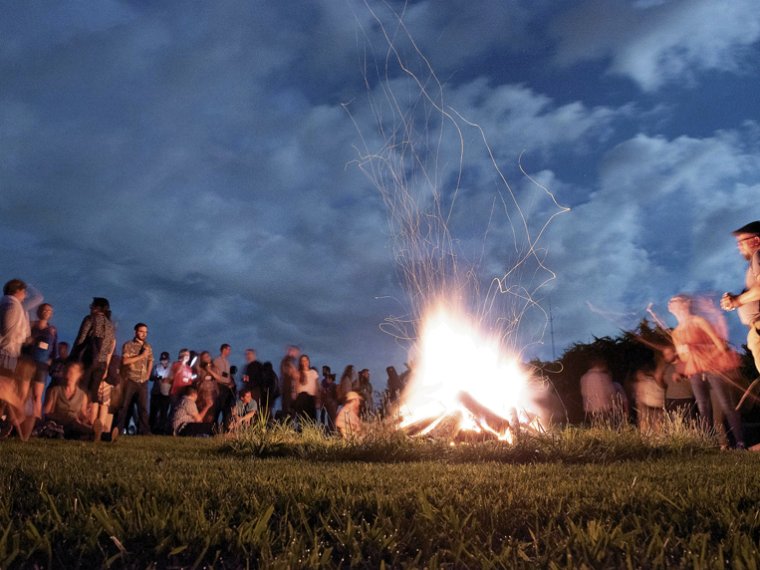






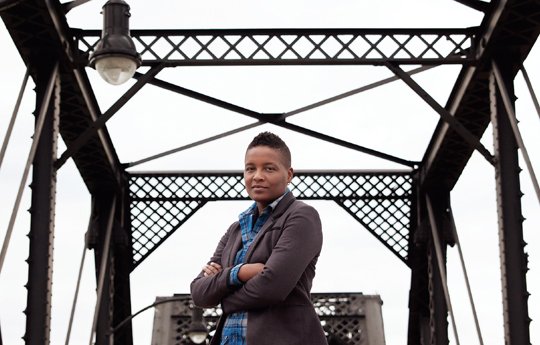
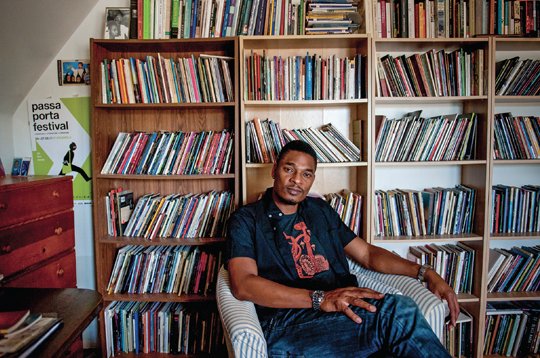













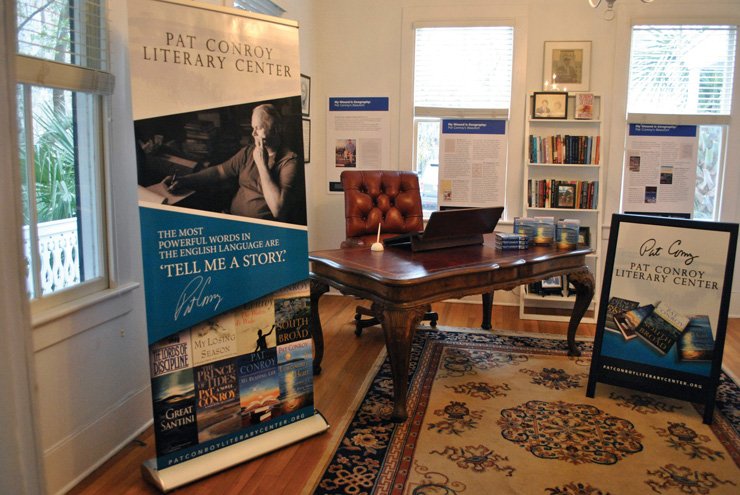
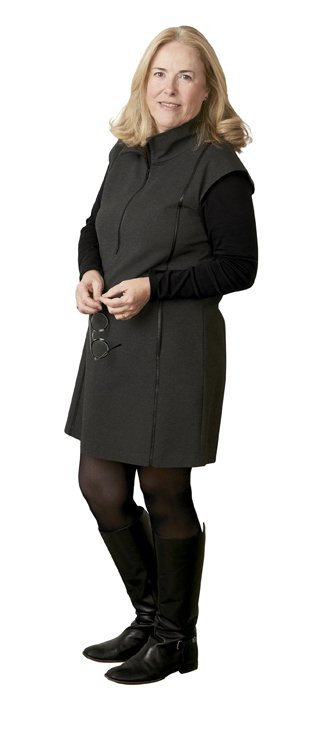
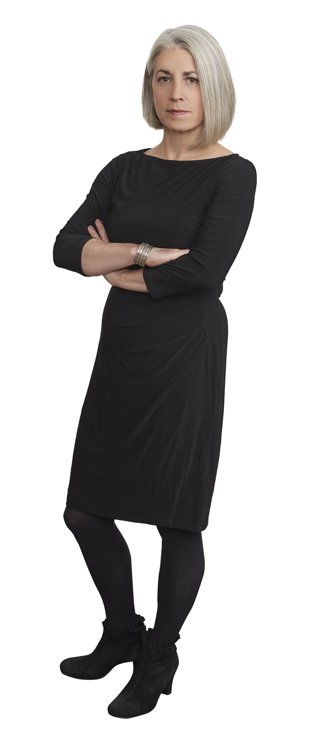








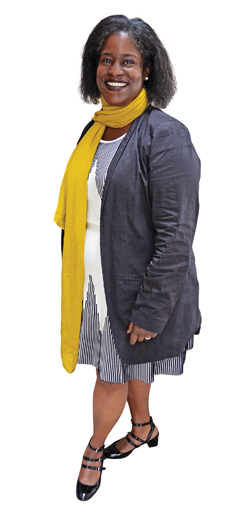 How has Amistad changed or grown in the past thirty years?
How has Amistad changed or grown in the past thirty years?